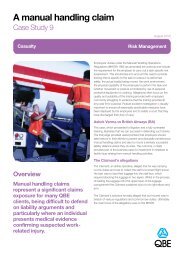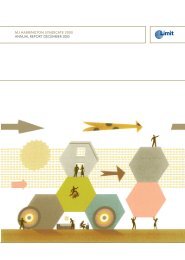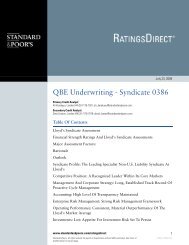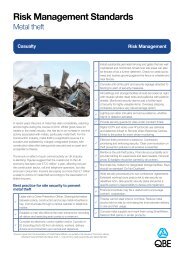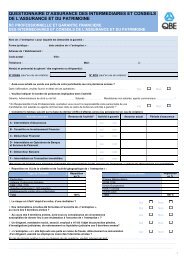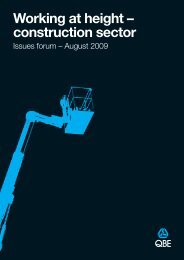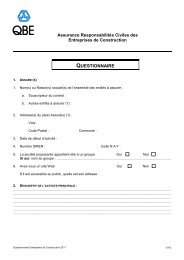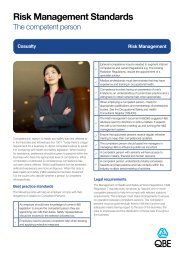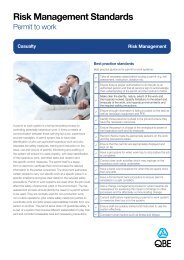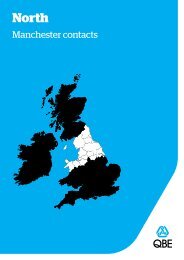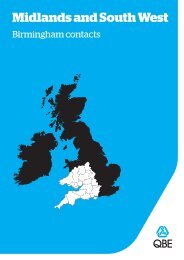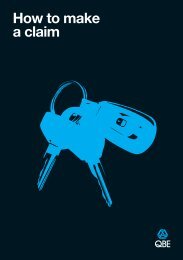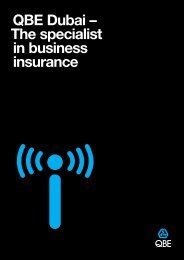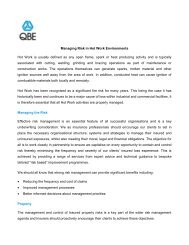QBE Syndicate 2999 Annual Report and Accounts 2009
QBE Syndicate 2999 Annual Report and Accounts 2009
QBE Syndicate 2999 Annual Report and Accounts 2009
You also want an ePaper? Increase the reach of your titles
YUMPU automatically turns print PDFs into web optimized ePapers that Google loves.
9 Other financial investments continued<br />
c) Valuation hierarchy<br />
The table below shows the financial instruments carried at fair value by valuation method.<br />
Level 1 Level 2 Level 3 Total<br />
<strong>2009</strong> <strong>2009</strong> <strong>2009</strong> <strong>2009</strong><br />
£000 £000 £000 £000<br />
Overseas deposits – 86,635 – 86,635<br />
Debt securities <strong>and</strong> other fixed income securities – 1,128,311 – 1,128,311<br />
Derivatives – 427 – 427<br />
– 1,128,738 – 1,128,738<br />
Notes:<br />
Level 1 Valued using unadjusted quoted prices in active markets for identical financial instruments. This category includes listed equity shares, certain exchange-traded<br />
derivatives, G10 government securities <strong>and</strong> certain US agency securities.<br />
Level 2 Valued using techniques based significantly on observable market data. Instruments in this category are valued using:<br />
a) quoted prices for similar instruments or identical instruments in markets which are not considered to be active; or<br />
b) valuation techniques where all the inputs that have a significant effect on the valuation are directly or indirectly based on observable market data.<br />
The type of instruments that trade in markets that are not considered to be active, but are based on quoted market prices, broker dealer quotations, or alternative<br />
pricing sources with reasonable levels of price transparency <strong>and</strong> those instruments valued using techniques include most government agency securities,<br />
investment-grade corporate bonds, less liquid listed equities, state <strong>and</strong> municipal obligations, <strong>and</strong> certain money market securities <strong>and</strong> loan commitments <strong>and</strong><br />
most OTC derivatives.<br />
Level 3 The syndicate has no financial instruments in level 3, which is the category where instruments have been valued using a valuation technique where at least one<br />
input (which could have a significant effect on the instrument’s valuation) is not based on observable market data. Where inputs can be observed from market data<br />
without undue cost <strong>and</strong> effort, the observed input is used. Otherwise, the syndicate determines a reasonable level for the input.<br />
10 Financial risk<br />
The activities of the syndicate expose it to financial risks such as market risk (including currency risk, cash flow <strong>and</strong> fair value interest rate risk <strong>and</strong> price<br />
risk), credit risk <strong>and</strong> liquidity risk. The syndicate’s risk management framework recognises the unpredictability of financial markets <strong>and</strong> seeks to minimise<br />
potential adverse effects on the financial performance of the syndicate.<br />
The key objectives of the syndicate’s asset <strong>and</strong> liability management strategy are to ensure sufficient liquidity is maintained at all times to meet the<br />
syndicate’s obligations, including its settlement of insurance liabilities <strong>and</strong>, within these parameters, to optimise investment returns for the syndicate.<br />
35<br />
<strong>QBE</strong> <strong>Syndicate</strong> <strong>2999</strong><br />
<strong>Annual</strong> report <strong>2009</strong>



